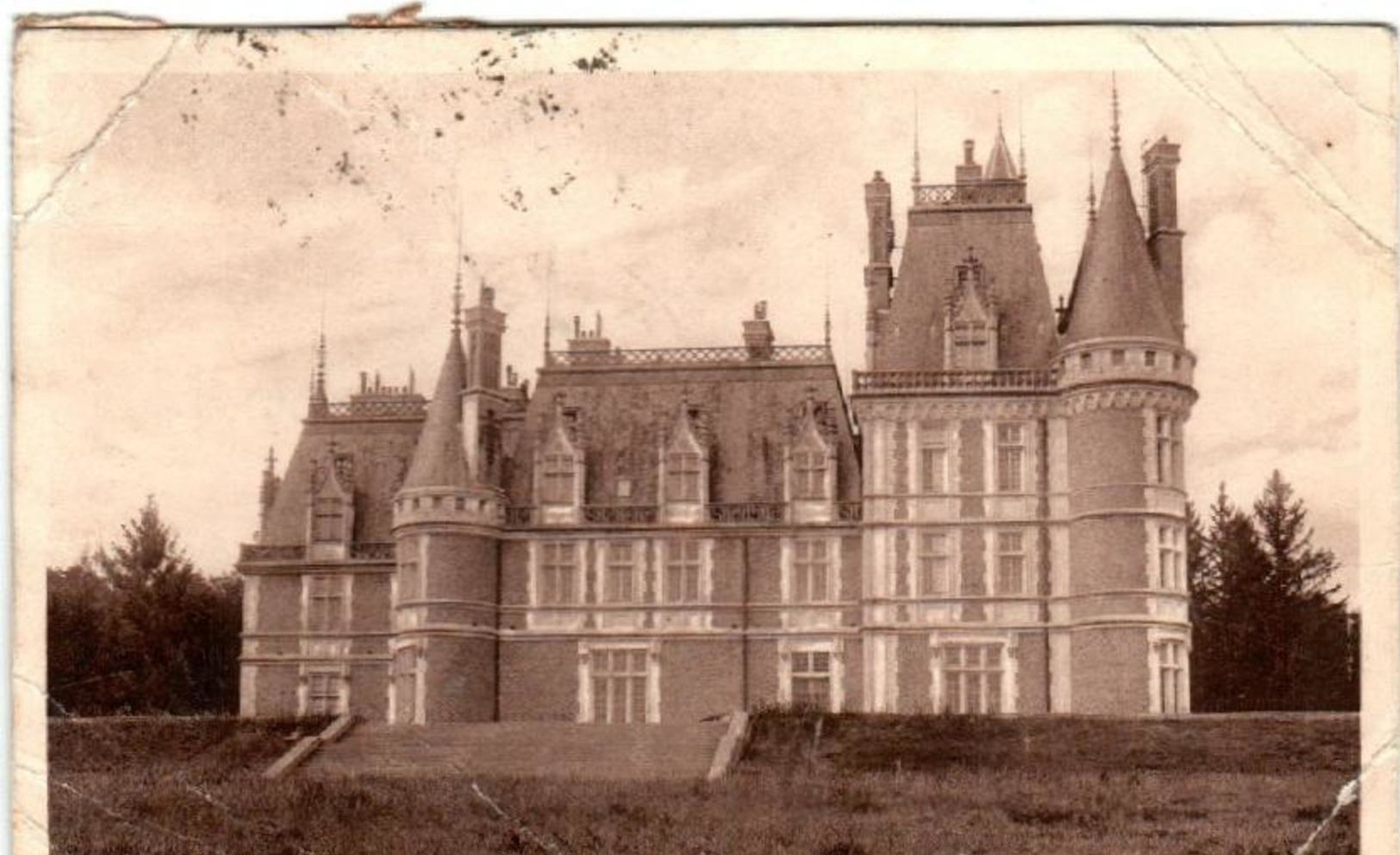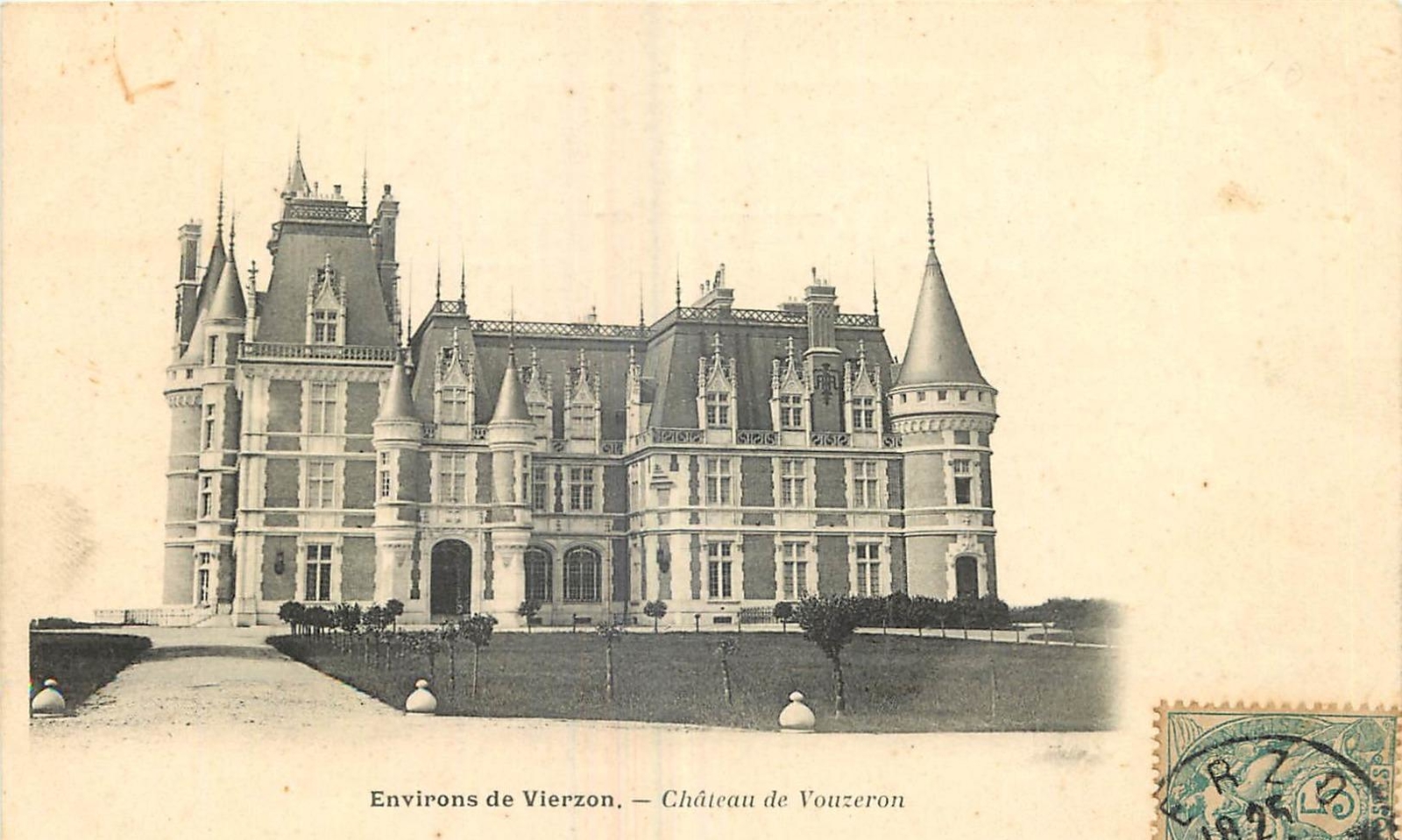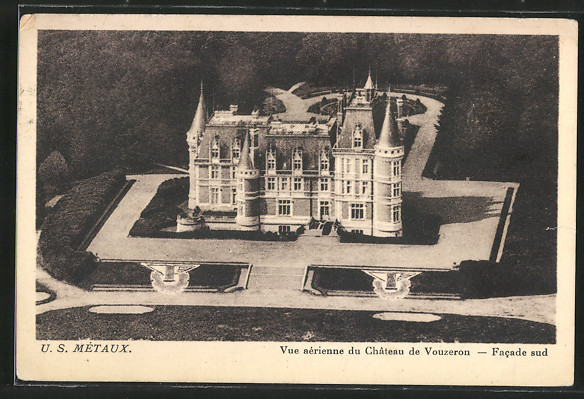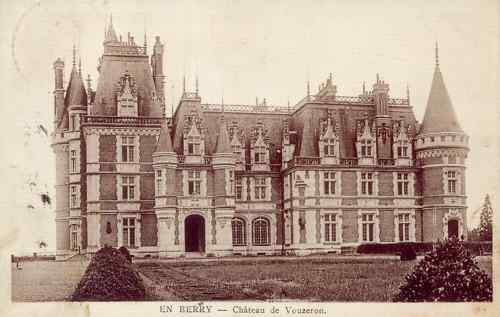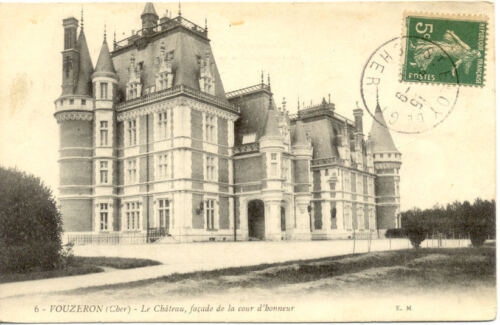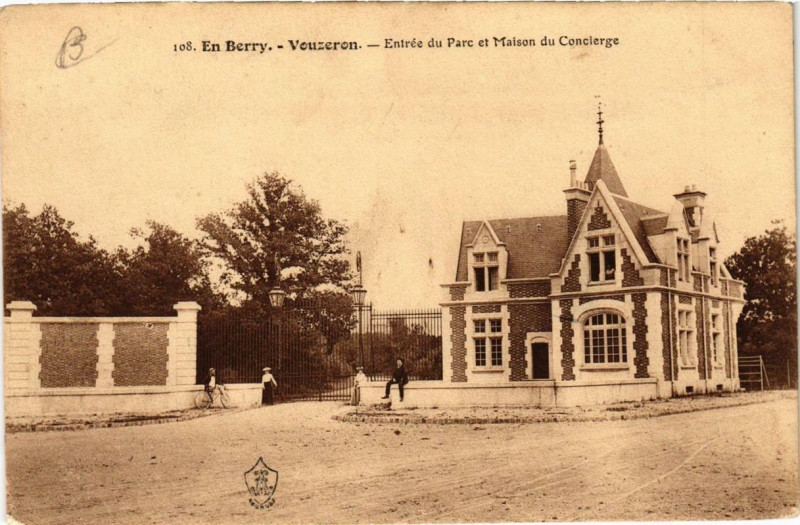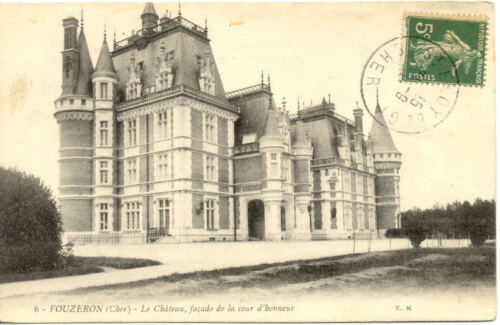
The Château de la Triboulette (or Château de Vouzeron), was commissioned between 1887 and 1893 by Parisian socialite, philanthropist and mayor of Vouzeron Baron Eugène Roger, whose social connections allowed him to bring on board the most impressive experts of his day to realise his architectural fantasy.
And so Triboulette was born, the brainchild of three design geniuses: French architect Gabriel-Hippolyte Destailleur, landscape architect Henri Duchêne, and Gustave Eiffel, structural engineer.
Within striking distance of Paris and nestled in 52 hectares of landscaped parkland, the Chateau de la Triboulette offers its owner the luxury of total privacy in a region of France long feted for its hunting tradition and still favoured by Paris’ business elite for weekends away from the capital.
This stunning edifice, with its neo-gothic and French Renaissance aesthetic, which inspired Destailleur’s later project at the Rothschilds’ Waddesdon Manor, was already admired in its day not only for the perfection of its design and structural elements – both interior and exterior – but also for the modernity of its creature comforts.
Like many Sologne chateaux, Vouzeron was built to glorify hunting. But it was also, in a sense, a monument to the 19th century itself, with its love of technical wizardry. Take, for example, the flawless underground draining system that continues to prevent waterlogging and collects rainwater for the lake.
Today, sensitively restored and future-proofed by its current owner and offered for sale with its eye-watering interiors, it continues a tradition of innovation in comfort combined with all the historical caché one would expect of a stately home.
The chateau remains as it was conceived by Roger: a romantic yet state-of-the-art residence where it is possible to strike a perfect balance between hospitality on a grand scale and the intimacy of daily life on the other.
pictures from the past
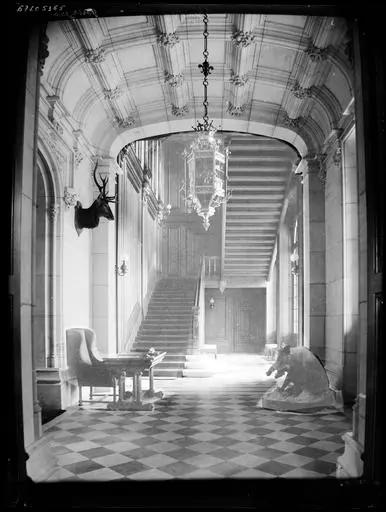
Entrance Hall
The chateau’s vast vestibule leads to its reception rooms. A wooden staircase with sculpted lions’ heads sweeps up to the first floor.
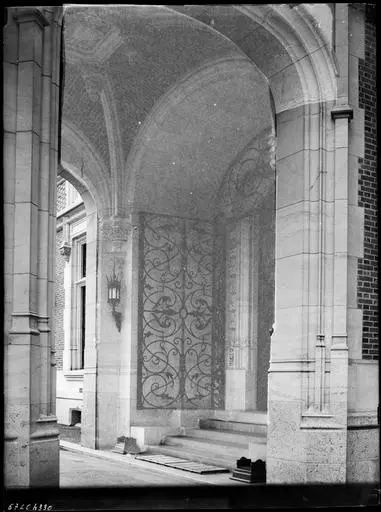
Porch
The main entrance to the chateau is located discreetly under a porch.
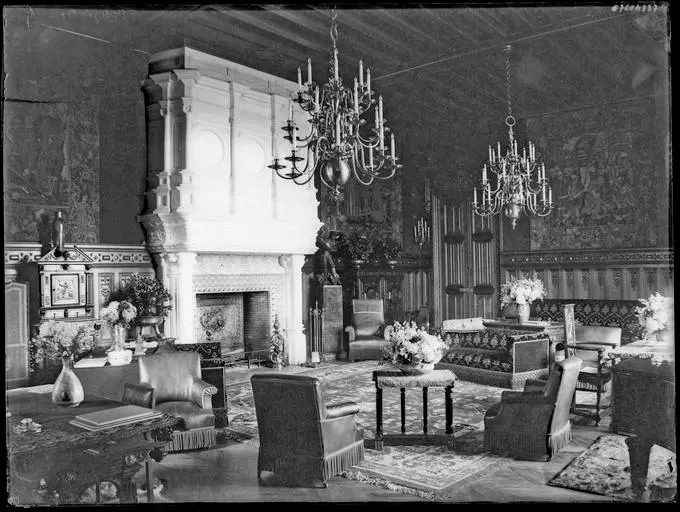
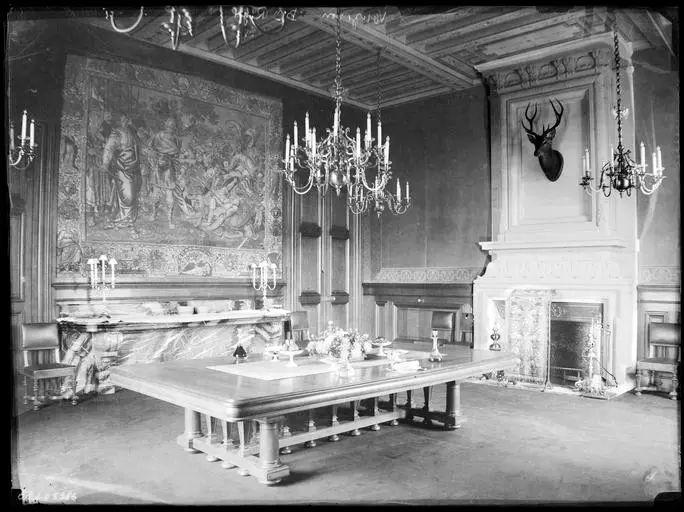
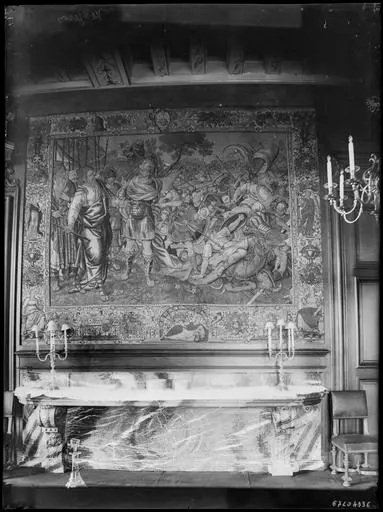
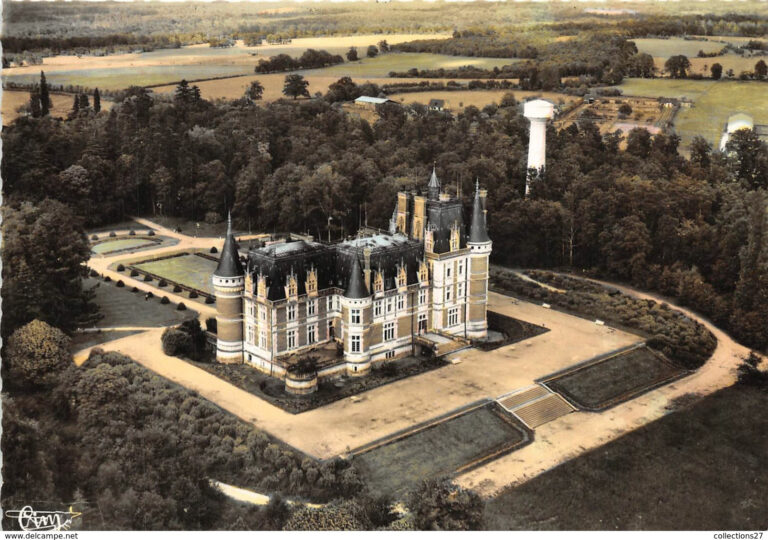
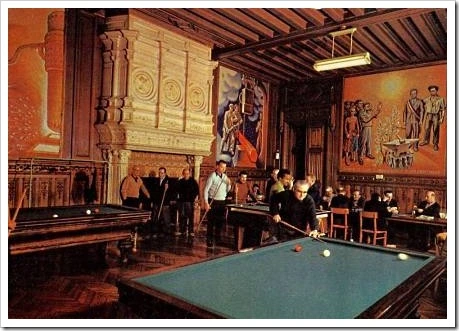
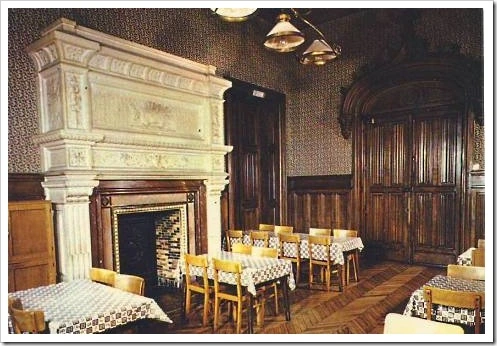
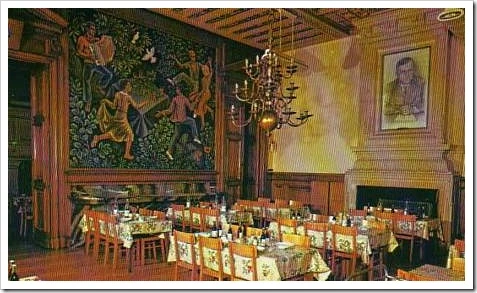
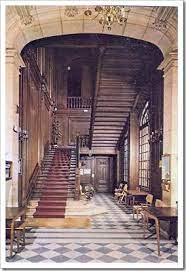
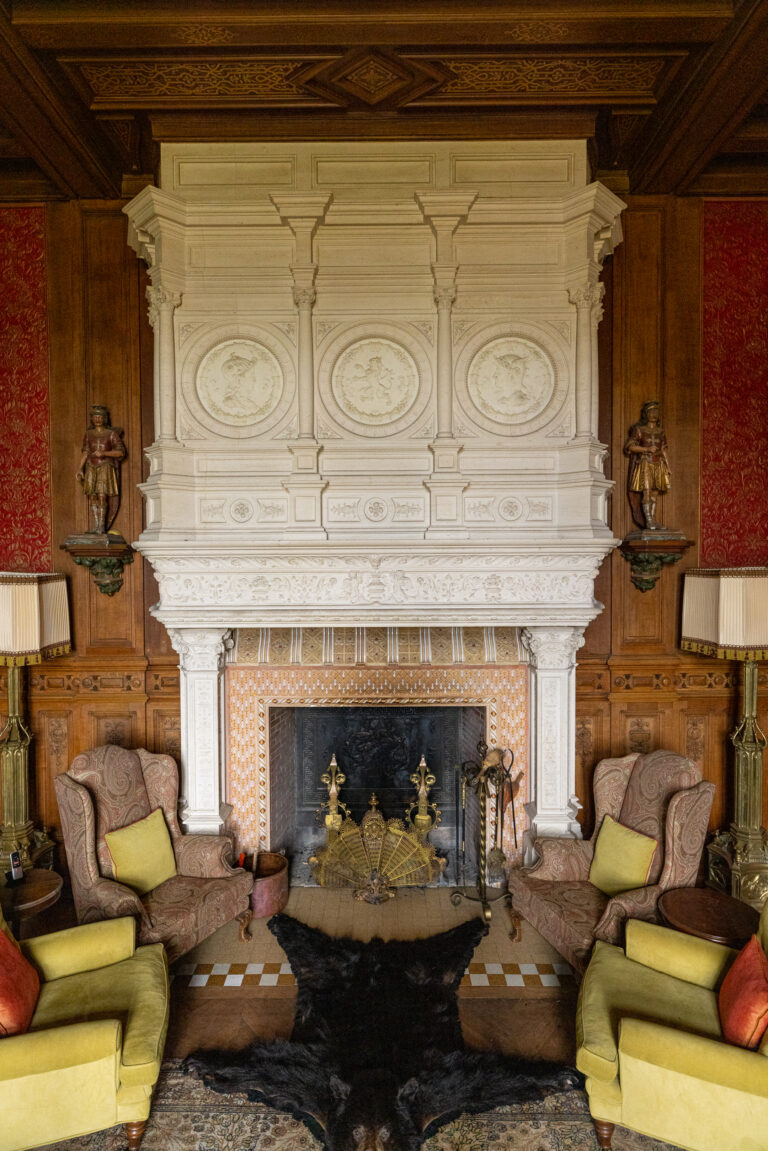
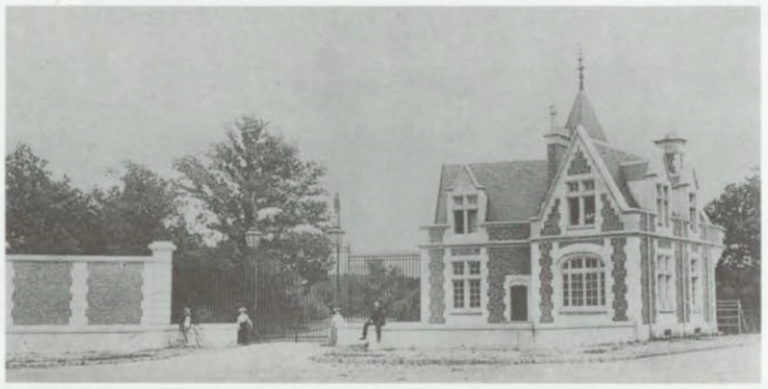
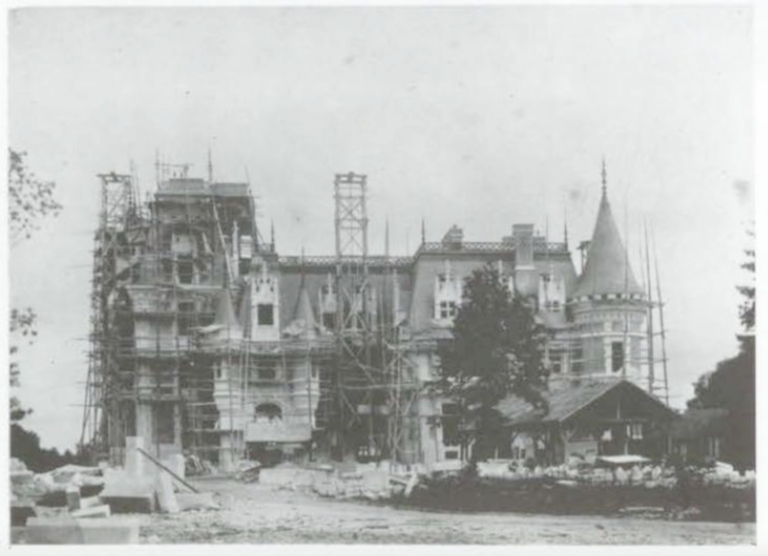
Park construction drawings
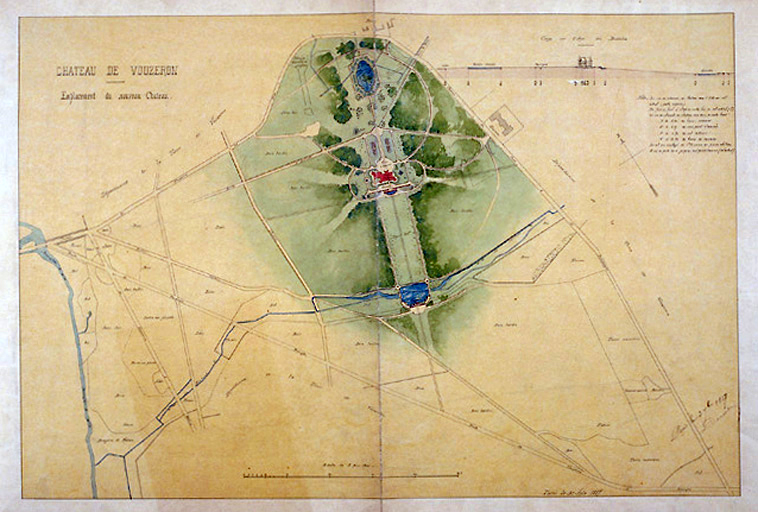

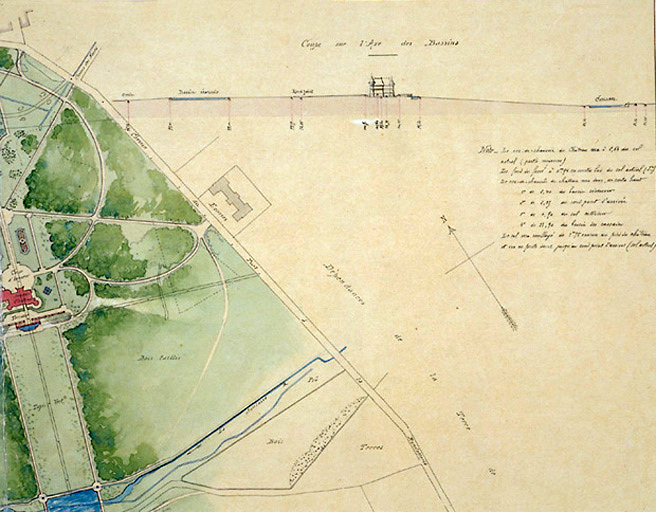
Post cards
